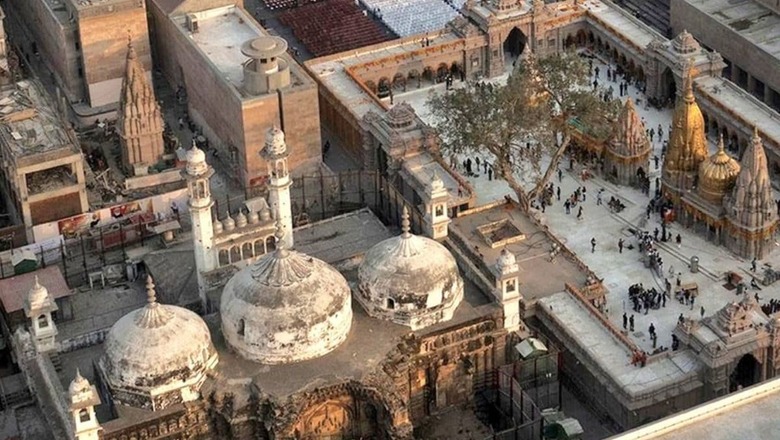
views
The Muslim side in the Gyanvapi-Shringar Gauri case has questioned the findings of the ASI survey, which has concluded that a large Hindu temple existed on the same spot before the mosque.
Besides, the Anjuman Intezamia Masjid Committee (AIMC), which represents the Muslim side in the case, also called the report by the Archaeological Survey of India (ASI) nothing but an elaborate version of a short survey carried out during the time of the advocate commission. It has also raised a question mark on a part of the report about the recovery of the remains of idols of gods and goddesses from the premises of the Gyanvapi mosque. The committee said it belongs to their sculptor tenants and has nothing to do with the mosque.
The reaction came two days after the Varanasi district court on January 24 ordered that the report of the scientific survey should be made public so that all petitioners – Hindus and Muslims – can access it. District judge AK Vishvesha had given the order while hearing a bunch of petitions filed by Hindu petitioners seeking access to the report.
“The pictures that have surfaced after the survey report has been made public are nothing new. All these are old pictures clicked during the advocate commission (in May 2022 when a special advocate commissioner was appointed to survey the mosque). Whereas, as far as the ASI survey is concerned, it is just an elaborate version of the old survey pictures. There are no new findings in the ASI’s survey of Gyanvapi mosque,” said Iklakh Ahmed, the advocate representing the AIMC, commenting on the images of the ASI survey that have surfaced on social media.
Ahmed said as per the court’s order, the ASI was allowed to carry out excavation work on the premises; however, it found few remains of the idols of gods and goddesses from the debris piled up on the west side of the mosque premises.
“These remains were dumped by five sculptor tenants, who used to carve out statues on our premises and dump the debris at the back,” he said.
About the ASI report, AIMC joint secretary SM Yaseen said: “This is a report not the decision. Our legal team will analyse the survey and file the objection accordingly. Meanwhile, I appeal my Muslim brethren to have patience and not indulge in any kind of debate over the survey.”
Advocate Vishnu Shankar Jain, the lawyer representing the Hindu side while citing the 839-page ASI survey, said the Gyanvapi mosque – standing adjacent to the Kashi Vishwanath temple – was built on the remains of a grand Hindu temple after it was demolished in the 17th century by Mughal emperor Aurangzeb. He said remnants of the statues of Hindu gods have been found in two basements during the court-ordered survey.
“The ASI has said the pillars and plasters used in the existing structure were studied systematically and scientifically for the enlargement of the mosque and constructing ‘sahan’. Parts of pre-existing temples, including pillars and plasters, were reused with little modifications. A minute study of pillars and plasters in corridors suggests that they were originally part of a pre-existing Hindu temple for their reuse in the existing structure, Vyala figures carved on either side of the lotus medallion were mutilated and after removing the stone mass from the corners, that space was decorated with floral design,” he added.
The ASI had conducted a court-approved scientific survey of the 17th-century mosque adjoining the Kashi Vishwanath temple to determine if it was constructed over a pre-existing structure of a temple, as claimed by Hindu petitioners who have sought year-round access to worship Shringar Gauri in the mosque compound.
Though the entire survey report, which is doing the rounds on social media is not yet accessible, some operative parts said it had concluded that “it can be said that there existed a large Hindu temple, prior to the construction of the existing structure”. The ASI said it drew the conclusion on the basis of a scientific survey, study of architectural remains, exposed features and artifacts, inscriptions, art and sculptures.













Comments
0 comment